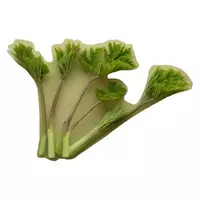Cow-parsnip

Hogweed is considered a fairly famous plant not only in Russia, but also in other states. Moreover, our ancestors knew about the useful properties of hogweed much more than modern residents of cities. This herbaceous perennial belongs to the Umbrella family. Hogweed is very large in height, just huge - sometimes up to three meters. The plant is distinguished by tough hairs, large leaves and a very powerful stem.
In cooking, leaves, young stems and rhizomes of hogweed are used. For example, the stems of this plant are added to salads in raw form - they taste like cucumbers. In addition, they are fried with onions in oil, boiled, marinated and salted. The leaves and stems of hogweed are often placed in borscht, soups and mash - the young foliage of the plant is similar to carrots in taste. Hogweed rhizomes are also preserved or dried for the winter - they are distinguished by a sweet taste.
Decoction of pubescent hogweed can be drunk chilled instead of kvass. Many people like the stems and petioles of large leaves, which are previously scalded with boiling water, panicked in flour, and then fried in oil. By the way, hogweed is used in this way in other countries: in Bulgaria, Germany, Latin America and the USA. Many types of hogweed can be used to make original and healthy sweets.
Types of hogweed
Of all known types of hogweed, Siberian hogweed, which is used in folk medicine and cooking, is the most widespread. In addition, common hogweed is suitable for these purposes. In addition, there are such types of hogweed as dissected hogweed, shaggy, sweet, pubescent and a number of others.
Composition of hogweed
The chemical composition of hogweed is diverse and rich: the plant has a lot of sugar, there is vegetable protein, tannins, the amino acid glutamine, the essential oil that forms the proteins amino acid arginine, coumarins. In addition, all parts of the plant contain vitamin C, iron, carotene, nickel, manganese, copper, boron and titanium.
The benefits of hogweed
The benefits of hogweed for the human body are due to the composition and properties of this plant. However, there are species that can have a toxic effect on the body, so they need to be specially treated before use.
Meanwhile, medieval medicines knew about the benefits of hogweed, which healed people from breathing difficulties and asthma. For example, Avicenna used hogweed to treat jaundice, epilepsy and other diseases, but modern herbal therapists are quite actively using this plant in the treatment of many ailments.
Harm to hogweed
The harm of hogweed, as you know, can be observed in the form of burns during tactile contact, but this is possible only with certain species of this plant. In addition, it is not advised to use hogweed preparations, as well as eat it in the presence of hemorrhoids, rectal cracks and gastritis.
hogweed 0 kKal
The energy value of hogweed (Ratio of proteins, fats, carbohydrates - ju):
Proteins: 0 g (~ 0 kCal)
Fats: 0 g (~ 0 kCal)
Carbohydrates: 0 g (~ 0 kCal)
 Español
Español Français
Français Português
Português Русский
Русский 简体中文
简体中文 繁體中文
繁體中文 日本語
日本語 한국어
한국어 العربية
العربية Türkçe
Türkçe Қазақ
Қазақ Deutsch
Deutsch Italiano
Italiano Українська
Українська
